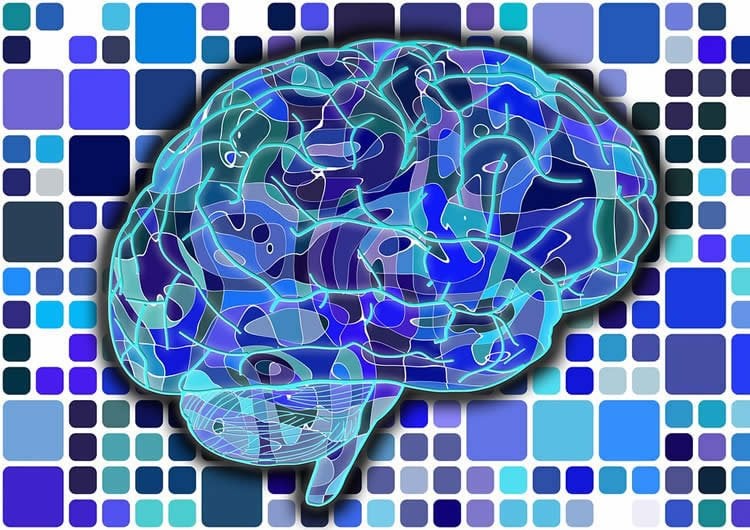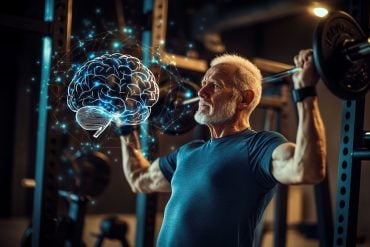Summary: A new study reports dTMS can help to reduce fatigue symptoms in those with multiple sclerosis.
Source: Charite.
Up to 90 percent of people living with MS report experiencing severe fatigue. Fatigue can have a serious impact on both a person’s work and social life, and leads many patients to give up work. In fact, a large percentage of people with MS rate fatigue as one of the most bothersome symptoms of the disease. Treatment options are scarce, and no licensed pharmaceutical treatments are available. In contrast, dTMS has been used in the diagnosis and treatment of a range of neurological and psychiatric disorders.
A team of researchers, led by Dr. Friedemann Paul of the NeuroCure Clinical Research Center (NCRC), has shown that dTMS, using the proprietary H-coil, a technology that allows brain stimulation three times deeper than that of standard TMS, is capable of producing significant improvements in fatigue symptoms. The severity of MS-associated symptoms was assessed using a standardized questionnaire and the Fatigue Severity Scale (FSS). 33 study participants with fatigue received thrice-weekly sessions of dTMS for a duration of six weeks; this involves a stimulation H-coil being placed above the patient’s head, which generates a magnetic field that influences nerve activity and neural circuits in the brain. A control group received a sham treatment.
“We observed no serious side effects in patients treated with dTMS, and it is therefore worth stressing the tolerability of this noninvasive electrophysiological technique,” says Prof. Paul, the study’s principal investigator.

Further, it is also worth noting that the treatment was delivered using a new type of H-coil, which had been developed specifically for use in this study. This coil permits the targeted stimulation of areas of the brain which, according to the latest research, play a major role in MS-associated fatigue. A follow-up study involving a larger number of participants is being planned. This is intended to verify the efficacy of this treatment method, and to help ensure the implementation of dTMS for MS-associated fatigue into routine clinical practice.
“We are excited about the collaboration between Prof. Dr. Friedemann Paul and his team at Charité’s NeuroCure and Brainsway for studying the use of our patented Deep TMS technology for the benefit of MS patients, a new neurological field for us. These promising results of relieving the very hard to treat fatigue symptoms in MS, brings a new hope for being able to provide a solution for the many patients who need it.” Says Ronen Segal, CTO of Brainsway LTD.
Source: Friedemann Paul – Charite
Publisher: Organized by NeuroscienceNews.com.
Image Source: NeuroscienceNews.com image is in the public domain.
Original Research: Open access research in Neurology: Neuroimmunology & Neuroinflammation.
doi:10.1212/NXI.0000000000000423
[cbtabs][cbtab title=”MLA”]Charite “Deep Brain Stimulation May Help Those With Multiple Sclerosis.” NeuroscienceNews. NeuroscienceNews, 7 February 2018.
<https://neurosciencenews.com/dtms-ms-8449/>.[/cbtab][cbtab title=”APA”]Charite (2018, February 7). Deep Brain Stimulation May Help Those With Multiple Sclerosis. NeuroscienceNews. Retrieved February 7, 2018 from https://neurosciencenews.com/dtms-ms-8449/[/cbtab][cbtab title=”Chicago”]Charite “Deep Brain Stimulation May Help Those With Multiple Sclerosis.” https://neurosciencenews.com/dtms-ms-8449/ (accessed February 7, 2018).[/cbtab][/cbtabs]
Abstract
Safety and preliminary efficacy of deep transcranial magnetic stimulation in MS-related fatigue
Objective: To conduct a randomized, sham-controlled phase I/IIa study to evaluate the safety and preliminary efficacy of deep brain H-coil repetitive transcranial magnetic stimulation (rTMS) over the prefrontal cortex (PFC) and the primary motor cortex (MC) in patients with MS with fatigue or depression (NCT01106365).
Methods: Thirty-three patients with MS were recruited to undergo 18 consecutive rTMS sessions over 6 weeks, followed by follow-up (FU) assessments over 6 weeks. Patients were randomized to receive high-frequency stimulation of the left PFC, MC, or sham stimulation. Primary end point was the safety of stimulation. Preliminary efficacy was assessed based on changes in Fatigue Severity Scale (FSS) and Beck Depression Inventory scores. Randomization allowed only analysis of preliminary efficacy for fatigue.
Results: No serious adverse events were observed. Five patients terminated participation during treatment due to mild side effects. Treatment resulted in a significant median FSS decrease of 1.0 point (95%CI [0.45,1.65]), which was sustained during FU.
Conclusions: H-coil rTMS is safe and well tolerated in patients with MS. The observed sustained reduction in fatigue after subthreshold MC stimulation warrants further investigation.
ClinicalTrials.gov identifier: NCT01106365.
Classification of evidence: This study provides Class III evidence that rTMS of the prefrontal or primary MC is not associated with serious adverse effects, although this study is underpowered to state this with any precision.






